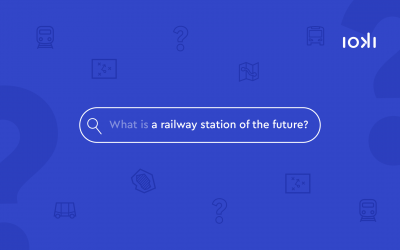According to a study by the TK, 33 % of employees work either in a directly neighboring residential district or up to 50 km away from their homes. Just under 7 % of those surveyed accept a commuting distance of at least 50 km to work. And 4 % even cover a distance of more than 200 kilometers daily to get to their workplace.
For commuters, these figures mean one thing above all: stress. In addition to the usual working day, there is a inconsiderable amount of travel time, the fear of being late due to uncontrollable road conditions such as traffic jams making our pulse race,additionally to the constant struggle with the sleep-wake rhythm due to commuting in the early morning or late evening poses a risk in road traffic. In summary: Commuting can be a strain. The study by the Techniker Krankenkasse “Mobility in the working world” shows that commuters suffer significantly more often from physical illnesses such as anxiety disorders, depression or irritability.
Now the current situation has shown us that there are alternatives to the daily commute to work: The home office spares us the annoyance of standing in traffic jams, rushing to the train or the tiresome search for a parking space at the end of a long working day. Nevertheless, most of us cannot expect to throw our previous jobs completely overboard after the crisis and only work from our home office. In a digital, networked and fast-moving world of work such as ours, one thing must not be neglected: personal exchange with colleagues and superiors in a calm and professional working environment.
This setting is especially longed for by employees after a long and sometimes exhausting period of time in the home office. “Back to the office” is currently the motto heard more often on social media.
But what is the best way to deal with the problem of the daily commute to work – especially as an employer – and what solutions are available for a needs-based and secure employee mobility?
The warm temperatures and good weather mean that many commuters switch to bicycles at the beginning of spring every year – and the current situation only supports this behaviour. But after a certain distance, this option is no longer viable – at least not for the normal sports enthusiasts among us. Public transport, on the other hand, is a popular mean of transport for commuters all year round – but changes and delays reduce comfort.
Employer-organised employee shuttles can be a real alternative. Whether door to (office) door solutions, as a quick and uncomplicated way of bridging the first and last mile on the way to work, a classic work transport between two locations or as a connection from the company headquarters to hubs such as the railway station or airport: on-demand solutions for employees can form a needs-based component of everyday working life and are often perceived as a real benefit. The trick: The company does not only convince its employees this way, but it also does something good for the environment. After all, the shift of commuters from motorised private transport to individualised public transport is a real sustainability booster.
In the next few weeks we will report in detail on what such on-demand work transport can ultimately look like. Stay tuned and read along!



